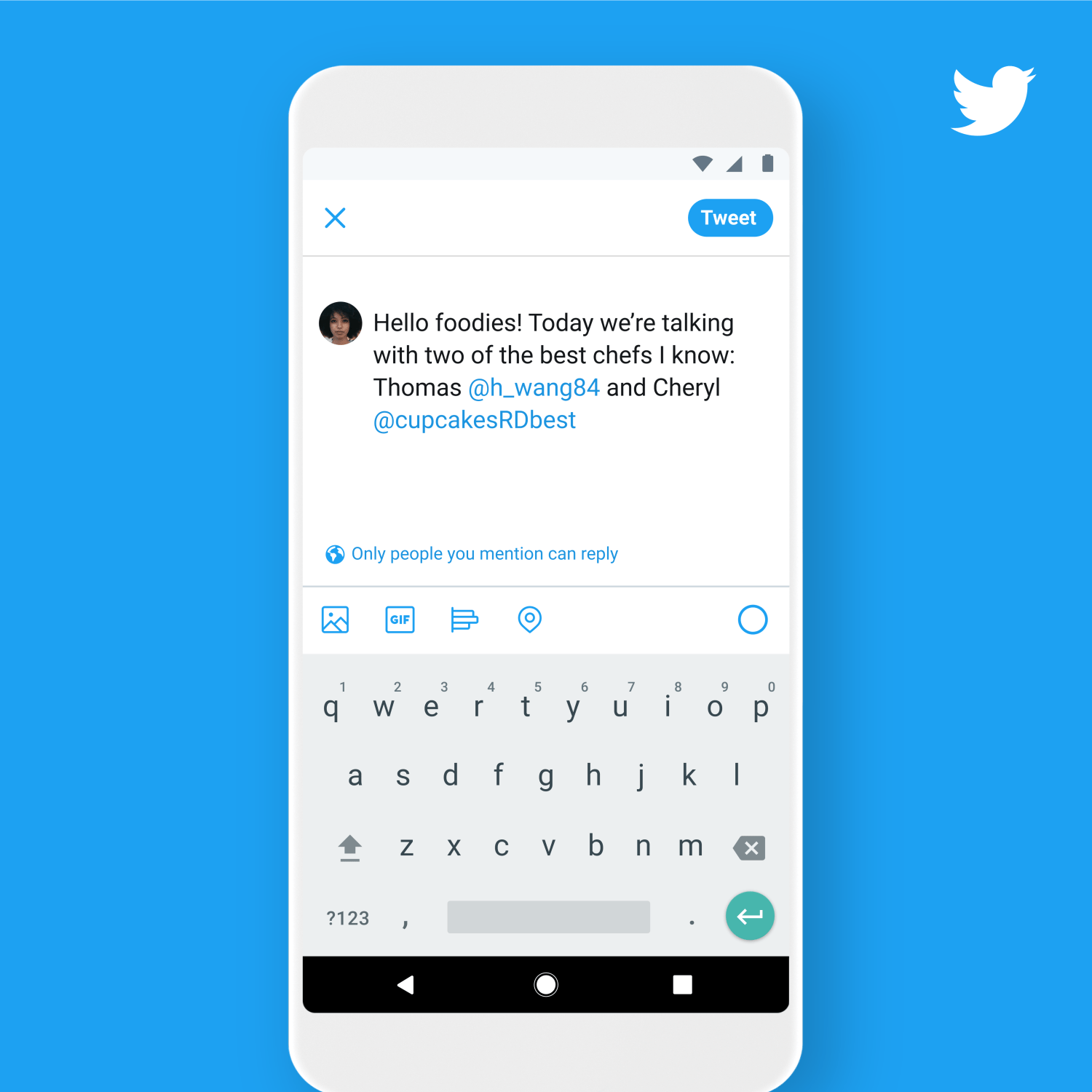Twitter has been on what seems like a campaign to make the site a place for more meaningful conversations among users. Ever since last year, it has rolled out several features aimed at furthering this goal. Thus, on Tuesday, the company made another such feature available worldwide, across all devices.
The feature lets people control who can reply to their tweets. The beta testing stage for this feature began in May this year, where only a limited group of people were given access to the new element.
Enabling the feature is pretty straight-forward, and can be customized for every tweet.
When a user makes a new tweet, a new globe icon now appears below it, right above the options to add media files. Clicking on the globe provides people with 3 possible options regarding who can reply to the tweet.
The default option allows everyone, regardless of whether they follow the user or vice versa, to reply to the tweet. The second option allows only people the user follows to reply to the tweet. Lastly, a user can forgo the option of letting anyone except very specific people reply by tagging said people and enabling the setting to only let tagged peple reply.

For a tweet customized to exclude a user from among those who can reply, the reply button will appear gray due to being disabled.
Purpose of the Feature
As mentioned earlier, Twitter has been trying to make its platform a more sound and meaningful place for users to communicate. The power to limit replies is also a function of this end-goal.
According to Suzanne Xie, Twitter’s product management director, “sometimes people are more comfortable talking about what’s happening when they can choose who can reply.”
In other words, the feature is supposed to empower users and hand them control over who engages with their tweets directly and who doesn’t. Additionally, it makes new kinds of actions possible, such as conducting interviews with people by allowing only tagged individuals to reply to a tweet.
One important reason behind this is to create a barrier between users and trolls and abusers. Twitter is an intense place, with people trying to make themselves heard within a tiny word limit. This, along with Twitter’s usual site norms, has made the place a potentially toxic environment for many users. Mixed with its infamous cancel culture, it isn’t rare to see a swarm of users crackdown on one single person.
Some have argued that this new feature creates a vacuum around people’s beliefs and opinions, in turn squashing discourse and healthy debate. Addressing this backlash, Xie mentions that people can still retweet tweets they cannot reply to with comments. She further highlights that this feature reduces the potential risk of users facing abuse, threats, and spam.
What Do the Numbers Say?
Beta analysis has shown that users with the feature felt more protected against abusive responses. It also decreased the chances of getting spam replies.
People who had previously submitted abuse reports were 3 times more likely to actively utilize the feature. Additionally, those using this feature were also 60% less likely to mute or block other users.
On average, limiting replies prevented three abusive replies and added one abusive retweet with comment. Twitter’s analysts took these stats as a good sign.
However, there are obvious pitfalls to this feature. Users have expressed concerns about it enabling influential people, mainly politicians with less humanitarian values, to gain further validation for their views and avoid necessary criticism by limiting replies. But, as pointed out earlier, this can be solved by retweeting with a comment.
In addition, there are other Twitter features that make up for this. One such feature prompts users to read an article link before retweeting it.
The scenario, however, is still hit or miss for Twitter. While it is moving in the right direction, it still has many hurdles to overcome. It needs to create a greater sense of security among users as it is still constantly under fire for being an insecure platform. Recently, Twitter made headlines for a hacking incident in the company. It was also caught using phone numbers for advertisements from 2013 to 2019, a bad sign given that it has approximately 180 million monetizable daily active users as of now.

